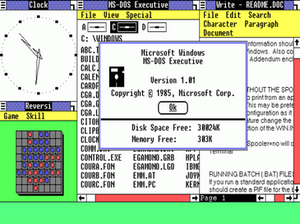I talked a fair amount about this topic last year when I discussed the Martin guitar company. Martin does a very good job of offering choices at multiple price points. Microsoft on the other hand falls a bit in the case of their operating systems.
I'm a very technical guy and a veteran in the information technology field and even I find it difficult to understand the differentiation between the various versions of Windows 7. Yes, each subsequent price increase provides additional functionality but when you start out the commonly available versions with the "Home Premium" edition it's kind of confusing as to what you're trying to accomplish. Wheres the "Home Standard" edition? Is that what Windows 7 "Basic" is meant to be? Why is it called basic then?
Rounding out the Windows 7 family are the "Professional" and "Ultimate" versions. Apparently people using PC's at home can only be Premium and they don't make the grade for Professional or Ultimate.
No, I'm not a fan of the naming Microsoft chose here. Something along the lines of
- Windows 7 Basic
- Windows 7 Home Standard
- Windows 7 Home Premium
- Windows 7 Home Ultimate
Would have been a bit easier for most people to parse, myself included. I really don't understand what the marketing department was trying to accomplish here with the current naming scheme. The basic idea is to give a clear sense of progression and name the more expensive versions in a manner that indicates the potential for an enhanced user experience. Would the techno babble on the back of the box still confuse some people? Probably. But all they really need to know is that the "Home Standard" version should be fine for most people and that the more expensive versions just add features that most people won't care about.
Getting back to pricing, Microsoft is of course trying to maximize their revenues on Windows 7. As I mentioned earlier, giving people multiple choices at different price points is a good way to go about doing that so there isn't anything wrong with the approach they took, but rather the execution on the naming side.
It'll be interesting to see what they do when Windows 8 comes out. I've seen some coverage in the press that indicates that Microsoft might try to cut down on the number of versions they offer to the home market. That's not necessarily a bad idea but a more logical naming convention would go a long way towards alleviating some of the confusion which would address at least a portion of the concerns with the current scheme.
Of course Apple has only two versions of their OS and only one of those is offered for sale to normal consumers. As I discussed in a previous column though, Apple is not primarily a software company whereas Microsoft is. That distinction is important. It's a mistake to assume that Apple's approach would be the correct one for Microsoft.
It'll be interesting to see what they do when Windows 8 comes out. I've seen some coverage in the press that indicates that Microsoft might try to cut down on the number of versions they offer to the home market. That's not necessarily a bad idea but a more logical naming convention would go a long way towards alleviating some of the confusion which would address at least a portion of the concerns with the current scheme.
Of course Apple has only two versions of their OS and only one of those is offered for sale to normal consumers. As I discussed in a previous column though, Apple is not primarily a software company whereas Microsoft is. That distinction is important. It's a mistake to assume that Apple's approach would be the correct one for Microsoft.
Image via Wikipedia


No comments:
Post a Comment